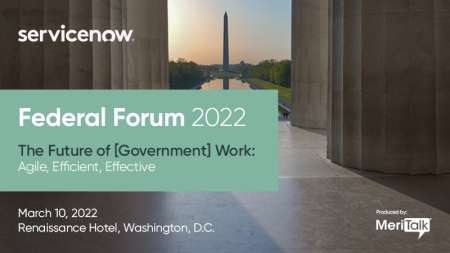
Federal agency chief information officers (CIOs) discussed their agencies’ grades on the 13th edition of the FITARA Scorecard at a hearing of the House Government Operations Subcommittee on Jan. 20, and outlined areas where they hope to improve going forward.
As always, the easiest way to make sense of the House Oversight committee’s multicolored scorecard is to view the results on MeriTalk’s FITARA Dashboard.
More IT Progress Happening Behind the Scenes, CIOs Say
On the 13th edition of the committee’s FITARA Scorecard, seven agencies earned higher overall scores, including the Office of Personnel Management (OPM), which rose by a full grade to “B+.”
“I was pleased to see that we did move up a full letter grade in the scorecard, but… it’s not a total accurate picture because so many of the measures are difficult to nail down,” OPM CIO Guy Cavallo said during the hearing.
“I definitely see us making progress at OPM, as reflected by that improved score and even the scores that we haven’t improved in the time since I’ve been here,” said Cavallo, who became acting CIO at OPM in March 2021, and was named permanent CIO in July.
“I see us taking concrete steps that maybe haven’t been enough to trigger us up to the next grade, but we’re headed on the right path,” he said.
The Department of Energy’s overall FITARA score did not change from the “C+” it was awarded in the previous scorecard issued in July 2021, but CIO Ann Dunkin agreed with Cavallo that she feels some metrics are not in line with her agency’s current IT progress.
“I would say that it’s a mixed picture as to whether those metrics are accurate representations of DoE’s progress. I think there are definitely places where the metrics reflect the need for improvement,” Dunkin said.
“There are a couple metrics, or at least one metric, where it’s not an accurate reflection of DoE’s performance and where DoE is doing a bit better and that is in security – where there’s a lot of consolidation of metrics and they’re pass-fail. So, I think we’re doing a little better on security than it might look, [but] I think a lot of this is fairly accurate.”
Subcommittee Chairman Gerry Connolly, D-Va., noted that while not all agencies “deserve an A” for their efforts, “there remain problems to be addressed” within the scorecard.
“Hopefully in the next iteration of the scorecard, we are accurately capturing performance so that we can make the necessary improvements,” Chairman Connolly said.
A Look at the EIS Transition
One specific metric where the majority of agencies are failing (15 of the 24 agencies, to be exact) is in the Enterprise Infrastructure Solutions (EIS) transition. This metric measures agencies on their progress to transition away from telecommunications services contracts under the expiring Networx contract, and to buy those services under the General Services Administration’s (GSA) $50 billion EIS contract.
But why are so many agencies failing in the EIS transition? Carol Harris, director of information technology and cybersecurity at the Government Accountability Office, said it’s because many agencies tend to wait until the last minute to transition.
“It just wasn’t a top priority for the agencies,” Harris said of moving to EIS. “When you take a look at the history of the past two telecommunication transitions, agencies have sort of drug their feet in this initiative and really did not make it a priority until they were close, very, very close to the deadlines for closing out those current set of contracts.”
“I applaud this subcommittee for including EIS as part of the scorecard and we need to just continue to push and put the heat on the agency’s to make it a priority,” she added.
Cavallo noted his agency was “very late in awarding” the EIS contract this time around, but said OPM is now “actively moving our network circuits and our telephone circuits now to that new contract.” He added, “I’m confident that we’re going to meet the deadline.”
Calls for Building the Federal IT and Cyber Workforce
Another area where CIOs agreed the Federal government needs to improve as a whole is in building the Federal IT and cyber workforce.
“We have to push every lever that we can to get today’s workforce interested in working in the Federal government,” Cavallo said. “At OPM, one of the things that I’ve done to help retain the staff – because not only do we have to hire them, but we want them to stay in government – is to implement an extensive training program and a certification program that either matches or exceeds what a lot of private sector companies do.”

As for Dunkin, she said her agency has an internship program that will have over 200 students this summer, which she hopes her agency can “turn into Federal employees going forward.” Additionally, Dunkin said DoE is using “all the flexibilities we have” for hiring.
“Not only is it hard to attract folks to government, but it’s a slow process,” Dunkin said. “So, when we can use flexibilities like direct hiring, we can bring people in quickly and not lose those folks to the private sector that has a faster process.”
